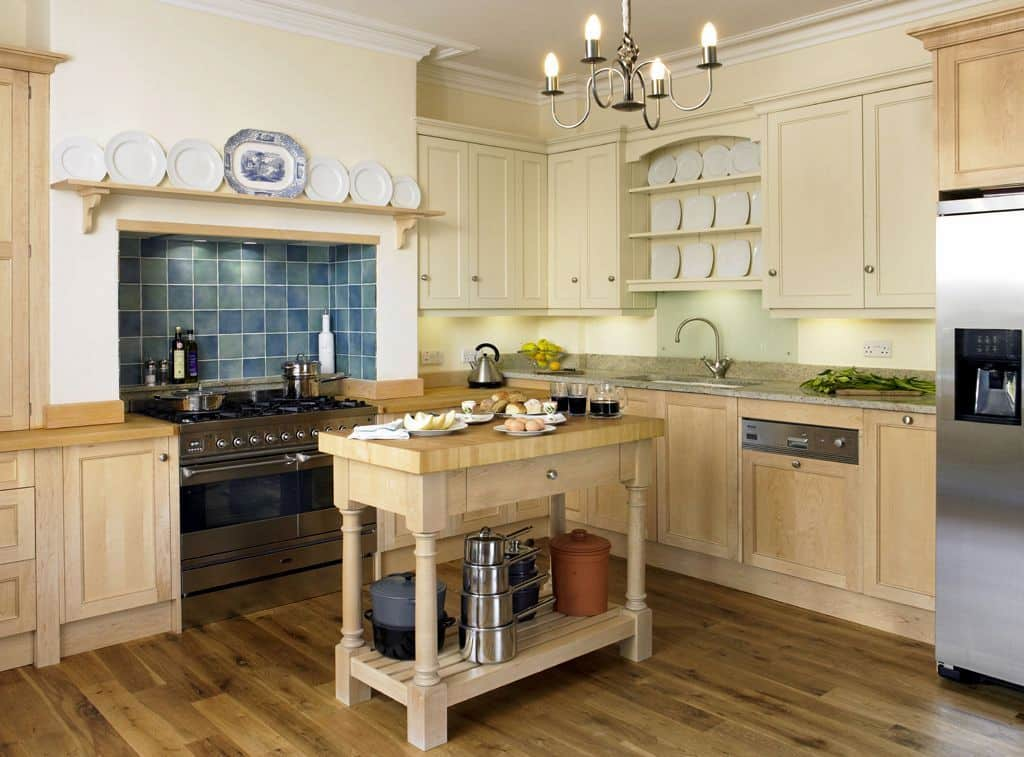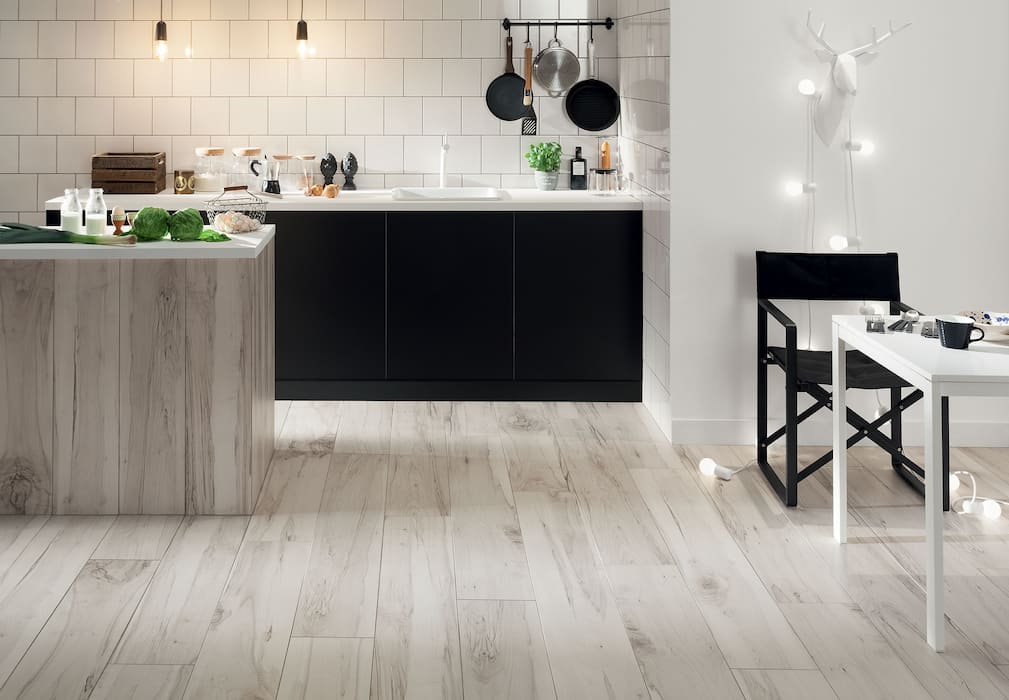Greasy floor tiles can be vary dangers and lead problems, this issue is mostly a result of dirty kitchen flooring. To offer how to clean and safe walking surface with home remedies, follow our experts advises.
Dirty and slippery flooring may result in poor sanitation and safety ratings, both of which can rapidly harm a food operation’s image, in addition to a greater chance of accident and higher insurance costs.
One of the most persistent soils that kitchen floor tiles encounter is grease specifically in commercial or restaurant kitchens, which is also one of the dirtiest to get rid of. Due to incorrect mopping techniques or the usage of a soiled mop and/or pail, grease is commonly left behind.
Grease may be retained in the fibers of a mop or remain in the bucket after it has been used to clean greasy floor tiles. You can be utilizing it in a way that makes your floors worse if they are not cleaned correctly. Kitchen floor with stains.
Grease cannot be removed using conventional cleaning methods or products due to its fragility. Frequently, grease is overlooked, lingering on the floor and absorbing into the grout.
Grease and hard tile flooring together make the kitchen a slippery and possibly hazardous place. If grease is not adequately cleared, it may be tracked into public spaces, potentially harming other users. If it is not properly kept, your kitchen floor may develop into a breeding ground for germs in addition to generating hazardous circumstances and a filthy look.

The best course of action is to wash your floors each day at non-peak times. Here, we’ll discuss the ideal procedure for cleaning and removing oil from the floor tiles of your establishment. Prevention: If you want to avoid re-soiling your floor tiles throughout the cleaning process, you must use a clean mop and bucket.
A previously dirty mop will spread grease and oils everywhere, making surfaces even more slick. Getting Ready to Clean: It’s crucial to start any cleaning process with the appropriate utensils, janitorial cleaning supplies, equipment, and personal protective gear (PPE).
Materials, cleaning products, and machinery needed. Supplies for Cleaning: Degreaser suitable for removing grease and animal fats. Step 1: Get Rid of Debris: Sweeping and eliminating any substantial debris from the area should be the first step in cleaning.
Prepare the chemical solution in Step 2: Degreasers come in a variety of varieties. Each kind of degreaser is designed to remove a certain sort of dirt. A cleaning solution called bio-enzymatic cleanser and degreaser uses non-pathogenic bacteria to attack pollutants and smells rather than pathogenic bacteria, which are those that cause illness.
Bio-enzymatic cleaning solutions’ microorganisms don’t provide any health dangers. Tip: Grease is a kind of organic soil, meaning it was once alive. Bio-enzymatic cleaners and degreasers are the most effective tools for removing grease.
Enzymes produced by microorganisms in the cleaner and degreaser break down grease to be removed. After that, the cleaner’s microbes consume the decomposed waste as a food supply.
Choose a degreaser that is designed to remove animal fats and grease if you are not using a bio-enzymatic degreaser. Tip: All-purpose cleansers are less abrasive than degreasers.
If you don’t follow the manufacturer’s suggested methods, damage might result. Make sure you are constantly according to the manufacturer’s instructions for appropriate product usage, dwell duration, and product removal.

Before using the product, thoroughly read the product label.3. Use a degreaser: Utilizing a fresh, wet mop, generously spray the floor tiles with the diluted solution. To make sure you haven’t missed any areas, you should utilize overlapping strokes.
Give degreasers the right amount of dwell time for best results. A bio-enzymatic cleanser and degreaser will work better the longer you let it sit. Most degreasers must be allowed to sit for at least 10 minutes. Find the suggested dwell time on the product label. Step Four: Clean the Floor: With the help of a deck brush with strong bristles, stir the solution on the floor tiles.
Brush with Firm Bristles for Cleaning Decks Grease may readily permeate grout’s porous surface and cause stains because of this. Using a bio-enzymatic cleanser and degreaser will eventually help bleach discolored grout, as a side effect.
Bio enzymatic cleansers and degreasers may help to remove embedded grease by penetrating the grout’s tiny pores with their bacteria and enzymes. Step 5: Discard the Solution: Squeegee the murky solution into the drain if your floor has one.
Your drains will benefit from using a bio-enzymatic cleanser and degreaser as well. The enzymes in the product will continue to “digest” the organic soils in the drain as you squeegee it down the drain, preventing blockage.
Use a mop and bucket or a wet/dry vacuum to collect the solution if your floor lacks drainage.
To avoid wiping oil all over the place and undoing your hard work, use a clean mop and bucket. You may remove the most solution by using a wet/dry vacuum, which will reduce the likelihood of slip and fall incidents. Step 6: Let the floor tile air dry: Use a floor fan or an air mover to hasten the drying process of the floor tiles.
Open the kitchen after taking down the wet floor signs. Step 7: Follow the right mop cleaning techniques: A good cleaning technique requires the use of a clean mop and bucket.

After cleaning, wash and preserve your mop carefully for future use. If you don’t thoroughly wash your mop and bucket, you’ll have chemical and/or dirt residues left behind when you go to clean the area again.
Most synthetic wet mops may be washed in the dishwasher. To wash your mop correctly and completely without harming the fibers, according to the manufacturer’s instructions. Clean the mop bucket both inside and out well, then tip it to dry.
Final Reflections: Grease must never be allowed to accumulate on the kitchen floor of your business in order to preserve employee safety and reduce the possibility of worker’s compensation claims.
To remove grease from your kitchen flooring, you must use the proper industrial kitchen floor cleaner in conjunction with a thorough cleaning procedure.
For your complete facility, including degreasers for your kitchen floor, Our outlets provide a selection of cleaning supplies and janitorial cleaning equipment options.
Whether you are in the Caribbean, Puerto Rico, or the United States, we can meet your facility’s demands. Our Specialist can assist you in deciding which degreaser is ideal for your facility if you’re unsure which to choose.










Your comment submitted.